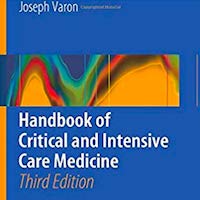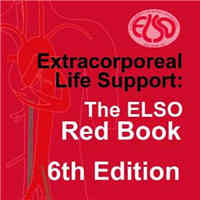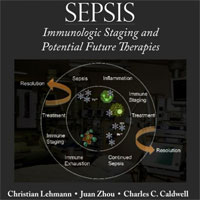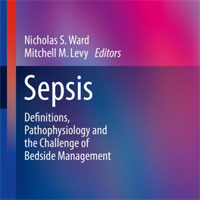Tag: diagnosis
Sick Children Identification in Acute Care Settings
At the heart of every pediatric consultation is the clinician’s responsibility to determine ‘is this child sick?’ In pediatrics illustrative language communicates a clinical picture of the child before us. When... read more
Early Identification of Intra-abdominal Infection and Sepsis
This case report illustrates the ability of the novel biomarker pancreatic stone protein (PSP) concentrations to act as a warning sign, allowing the early identification of intra-abdominal infection and post-operative peritonitis... read more
Delphi Approach to 5-level Priority Triage Systems
This study proposes a standard of 49 outcomes divided into two sets tied to red and orange priority respectively, to be used when evaluating 5-level priority triage systems; Lund Outcome Set for Evaluation of Triage (LOSET).... read more
Early evaluation of heart rate variability can predict the outcome of patients in the ICU
The study evaluated the use of heart rate variability (HRV) to predict the outcome of patients in the ICU. HRV is a way to evaluate the cardiac effects of the autonomic nervous system, and a relation between HRV and outcome... read more
Heterogeneity in Pediatric ARDS: Challenges and Complexities in Diagnosis and Treatment
Pediatric intensive care physicians are well-acquainted with the concept of heterogeneity, as the patients, pathologies, and treatments they encounter can vary greatly both within the pediatric intensive care unit and within... read more
Use of Cardiac POCUS in Diagnosis of HFrEF in a Patient with Ischemic Stroke
Ischemic strokes in younger adults, those 18 to 50 years old, account for approximately 10% to 15% of all ischemic strokes. Risk factors for stroke between younger and older patients tend to be similar. Younger patients... read more
Pros and Cons of Disconnecting the Ventilator During Acute Respiratory Decompensation
Disconnecting the ventilator and manual BMV should be performed in cases where device malfunction is the primary cause of decompensation. These instances are quite rare. Disadvantages of switching to BMV include loss of... read more
Myocarditis After COVID‐19 mRNA Vaccination in Australia
Myocarditis in adolescents and young adults following the administration of coronavirus disease 2019 (COVID‐19) mRNA vaccines has been reported. Vaccination of 12–16‐year‐old adolescents with Comirnaty (tozinameran,... read more
Postoperative Sepsis Infection Can Be Identified Using Gene Expression Signatures
Host biomarker signatures may be able to identify postoperative infection or sepsis up to three days in advance of clinical recognition. If validated in future studies, these signatures offer potential diagnostic utility... read more
Pericarditis and Myocarditis in the ED
Chest pain is one of the most common presentations to the emergency department (ED) and includes a wide differential diagnosis. In today’s post, we will review a less common cause of chest pain seen in the ED: pericarditis... read more
Risks and Burdens of Incident Diabetes in Long COVID
In the post-acute phase, we report increased risks and 12-month burdens of incident diabetes and antihyperglycaemic use in people with COVID-19 compared with a contemporary control group of people who were enrolled during... read more
Epidemiology and Outcomes of Critically Ill Children at Risk for PARDS
The Pediatric Acute Lung Injury Consensus Conference “at-risk for pediatric acute respiratory distress syndrome” criteria identify critically ill children at high risk of pediatric acute respiratory distress syndrome... read more
Therapeutic Hyperthermia Associated with Improved Survival in Afebrile Critically Ill Patients with Sepsis
Participants randomized to external forced-air warming did not have a difference in HLA-DR expression or IFN-γ production. In this pilot study, however, 28-day mortality was lower in the intervention group. Future research... read more
Lung Ultrasonography Beyond the Diagnosis of Pediatrics Pneumonia
Pneumonia is a prevalent disease with considerable morbidity and mortality among the pediatric population. Early diagnosis and swift commencement of the correct treatment are vital for a favorable clinical outcome. Along... read more
POCUS and Digital Tomosynthesis Correlation When Used with COVID-19 Pneumonia Patients
Point-of-care ultrasound (POCUS) in primary care has good sensitivity and specificity when compared to digital tomosynthesis as regards the diagnosis of COVID-19 pneumonia in patients with the clinical suspicion of pulmonary... read more
Virtual Craniofacial Clinic Outcomes for Assessing Plagiocephaly During the COVID-19 Pandemic
Virtual clinic encounters resulted in comparable diagnostic accuracy. The trend toward frequent follow-up assessments and changes in the final diagnosis in the virtual clinic cohort has indicated a level of diagnostic uncertainty... read more
ARDS Subphenotypes Validation and Utility Identified by Machine-learning Models
Classifier models using clinical variables alone can accurately assign ARDS subphenotypes in observational cohorts. Application of these models can provide valuable prognostic information and could inform management strategies... read more
Coupled Plasma Filtration and Adsorption for Septic Shock Treatment
Early deaths are likely related to the ongoing CPFA treatment, for reasons that if identified could allow some deaths to be prevented. We hypothesize a connection to hemodynamic instability consequent on renal replacement... read more
The Value of Echocardiography Combined with Lung Ultrasound to Evaluate COVID-19 Pneumonia
In COVID-19 pneumonia patients, the pulmonary arterial pressure and LUS are positively correlated. For those who are unable to be transferred or relocated, the pulmonary arterial pressure may be measured to reflect the degree... read more
Recognizing Vaccine-Induced Immune Thrombotic Thrombocytopenia
Vaccine-induced immune thrombotic thrombocytopenia is a serious complication of vaccination that is not feasible to anticipate or prevent. When the patient presents with sustained headache, neurologic symptoms/signs,... read more
How One Patient Was Treated for a Stroke Via Telemedicine
A patient believed to have suffered a stroke typically gets transported to the nearest emergency room for tests to determine the best course of action. Telemedicine at Johns Hopkins Medicine enabled one patient to have... read more
Hypocalcemia Association with In-hospital Mortality and Complications in Patients with Acute Pulmonary Embolism
Pulmonary Embolism (PE) patients with hypocalcemia have higher in-hospital mortality than those without hypocalcemia. The in-hospital complications were also higher, along with longer length of stay. In the 2017 NIS, 187,989... read more









